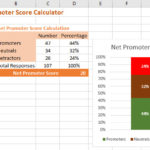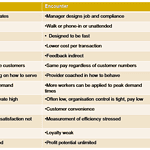With the expanding use of Transactional Net Promoter Score by a range of organisations, there is a growing need to collect large volumes of survey responses with a smaller amount of feedback in each survey.
This is because the standard Transactional NPS® (TNPS) survey is just two questions long:
- How likely is it that you would recommend Company X to a friend or colleague?
- What is the main reason that you gave that score?
What is Transactional Net Promoter Score (TNPS)?
Transactional Net Promoter Score is the process of surveying your customers after an interaction, or transaction, with your organisation. This generates very actionable data on how to improve the touch-points in the customer journey and is a very effective way of improving NPS.
Typically this will be at one or more of your customer touch points and can include:
- order entry,
- product delivery,
- website interaction,
- account payment,
- sales contact,
- visit by a service technician, etc.
How to collect Transactional Net Promoter Score data
There are currently four main approaches used to survey customers for TNPS:
1. Outbound telephone calls:
Using call centre agents to call each (or a selected set of) customer(s) and perform the survey.
2. Inbound, agent diverted calls:
At the end of a call the customer is asked if they mind answering a couple of questions on the transaction. If they agree they are immediately transferred to a contact centre agent to take their feedback.
3. Inbound IVR:
Inbound callers are directed to an IVR based survey engine at the end of the call. The caller answers using the key pad and the system records their qualitative comments.
4. Email/Web surveys:
A survey system sends an email to each customer with a link to a web based survey. The respondent then clicks on the link and fills out the survey on line.
The Best Transactional NPS Data Collection Approach
Each has their advantages but which is the best?
Before we can answer that we need to look at the key requirements for a successful Transactional NPS survey process:
1. Timely:
An effective TNPS process is one where the customer is contacted very soon after the service or transactional interaction. This ensures that the interaction is fresh in the respondent’s mind.
2. Efficiently gather qualitative feedback:
The second of the two standard TNPS questions is qualitative in nature. It’s role is key as it helps the organisation to understand how to make changes to improve their business.
3. Drive closed loop action:
More so than relationship NPS, transactional NPS is focused on closing the loop to immediate action. The cycle time for this process should be measured in hours not days or weeks.
4. Support live data analysis:
As TNPS is an on-going survey process the organisation must have access to an on-going data analysis approach that allows it to understand and action the data received in a timely manner.
5. Deliver high volumes:
TNPS is typified by a high volume of customer contacts each and every day. It is this high volume of customer contact that provides a constant stream of feedback to all employees.
So how does our list of requirements mesh with the different survey approaches?
1. Outbound telephone calls
While they can be timely, the ability to connect with a high volume of customers comes at a high cost to the organisation. To efficiently contact enough customers also requires relatively advanced contact centre technology and skills.
However, the agent is able to ask customers about their experience and gather a good volume and quality of qualitative feedback.
But, having collected the data it still requires additional systems to drive the closed loop action and data analysis.
Outbound calls also suffer from a unique issue in that that respondents may not feel comfortable providing honest feedback to another person from that company, particularly negative feedback about a specific person.
2. Inbound, agent diverted calls
In this approach the timeliness of the process is assured as the customer is connected immediately after the transaction has been performed. However, of course, there must be an operator available to take the call and the relative cost is high versus the fully automated approaches below.
Forwarding a customer to a holding queue will drive down the score for the survey and reduce the conversion rate. It is also a poor customer experience in it’s own right.
Also, using this method eliminates the ability to deal with a range of contact or transaction channels in an integrated manner. It only really works for contact centre transactions.
The ability to “game” this approach is also high with agents able to push happy customers to do the survey, or more often, to neglect to inform unhappy customers about the survey. This gives the operator the ability to affect their personal NPS.
Having collected the data it still requires additional systems to drive the closed loop action and data analysis.
3. Inbound IVR
The ability to be timely is high as the diversion to the IVR is immediate and there is no need to worry about an agent being available.
One key drawback is that the qualitative data is collected as recorded audio information. In order to turn that data into action it must first be listened to or transcribed. Both of these data collection approaches are expensive and time consuming, reducing the speed of response and increasing overall cost.
This technique also suffers from the ability of operators to game the system, similar to that noted above.
Anecdotally the survey completion rate is also lower than average as customers don’t want to wait on the phone more than necessary.
Having collected the data it still requires additional systems to drive the closed loop action and data analysis.
For a more detailed evaluation of Inbound IVR see this post: Post Call IVR Surveys: Popular But Not That Useful
4. Email/Web surveys
Using web surveys for transactional Net Promoter Score delivers on all of the key requirement.
The survey can be sent out the next day, or even sooner if required. Customers are familiar with the email survey approach and so response rates are generally high (20-40%).
When gathering qualitative feedback, the customer can tag their comment with the area of the business to which it relates. This greatly speeds up the analysis process and makes the whole approach much more action oriented.
It can also be rapidly scaled to very large volumes with little extra cost.
So long as the web survey engine has the right tools to rapidly analyse and report on the data in Net Promoter Score terms this can be a very effective approach.
Lastly, this approach can be used across all the channels in an organisation and is not limited to just contact centre transactions.
Get the Business Leader's Guide to Net Promoter Score Download Here




